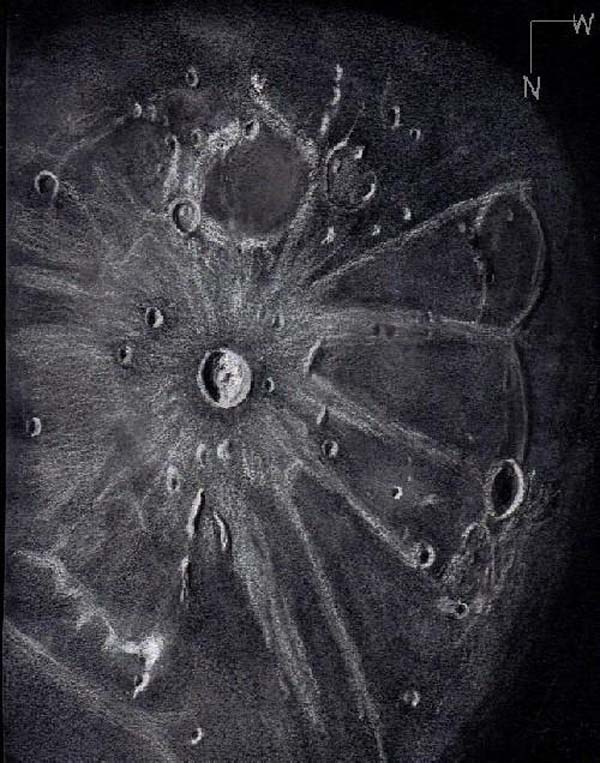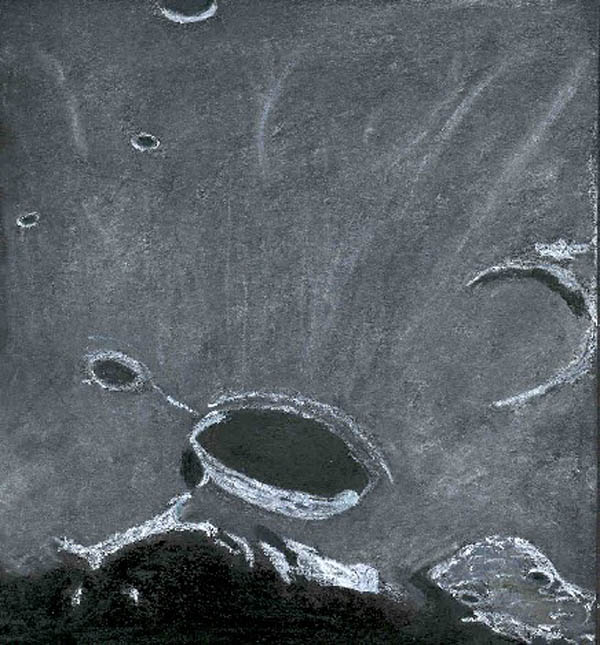Crater Kepler and its Rays
At nearly 12 days into the current lunation sunlight is bathing young crater
Kepler and its extensive ray system. Kepler falls into the category of a smallish
complex crater (31 km in diameter and 2.75 km deep) with a low peak rising from an
otherwise small flat central floor. Most of the floor is covered with slumped wall
debris. A small part of the inner wall appeared terraced. Crater Kepler lies
between the Oceanus Procellarum and the Mare Insularum both of which are made of
dark lavas. Very prominent rays extend from the rampart and ejecta blanket well
beyond the crater rim for more than 300 km. Some of the rays, especially in the
east, overlap rays of other craters such as Copernicus.
Crater Kepler was named by the Jesuit astronomer Giovanni Battista Riccioli about
28 years after the death of Johannes Kepler. He also named Crater Tycho after
Tycho Brahe, the man with the accurate data measurements that helped make Kepler
famous.
West northwest of Kepler the large old crater close to the terminator is Marius.
Using a higher magnification ocular than that used in this drawing, I could see
several domes to the north of the crater in very good grazing light. Kepler is a
favorite crater target of mine as the moon approaches full phase.
Sketching:
For this sketch I used: black Strathmore 400 Artagain paper 9”x12”, white and
black Conte’ pastel pencils and a blending stump.
Telesccope: 10 inch f/ 5.7 Dobsonian and 9 mm eyepiece 161X
Date: 4-29-2007 2:45-3:45 UT
Temperature: 18° C (65° F)
Clear, calm
Seeing: Antoniadi III
Colongitude 51.8 °
Lunation 11.6 days
Illumination 90.5 %
Frank McCabe



